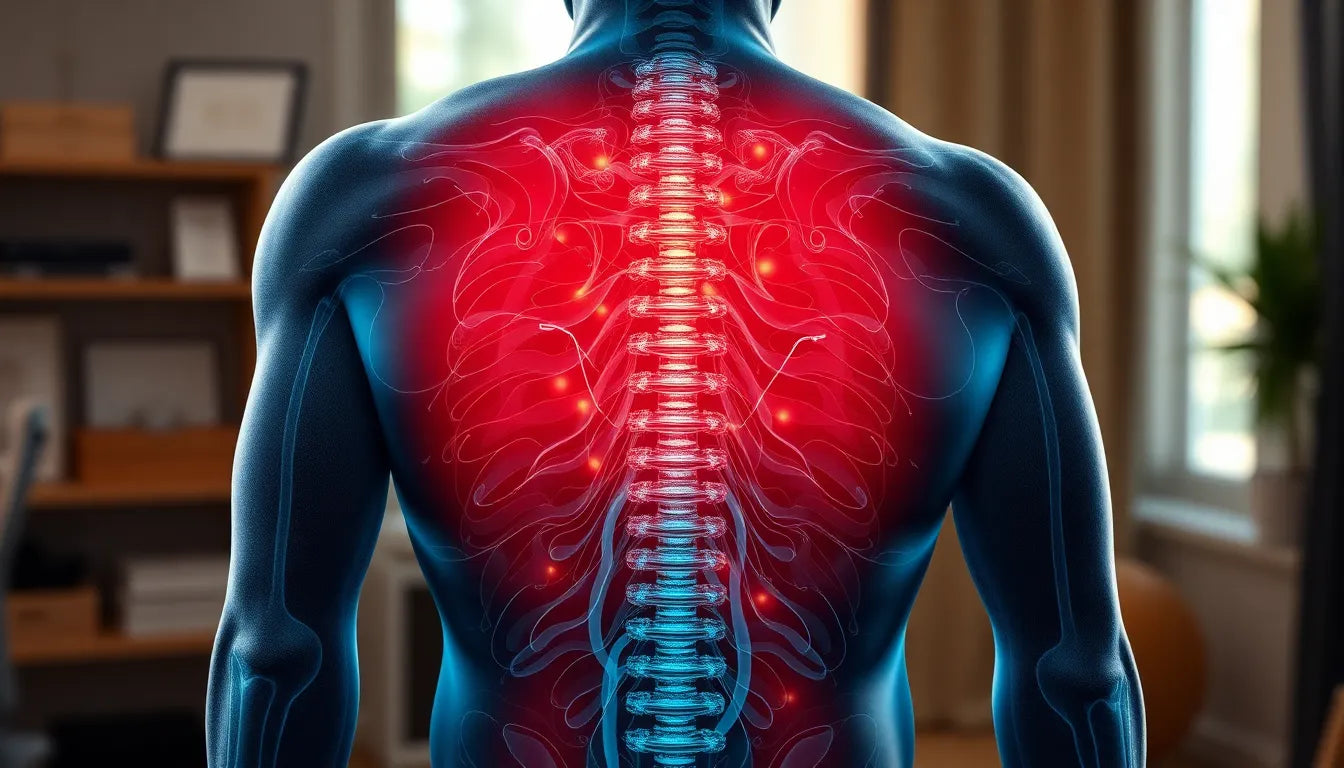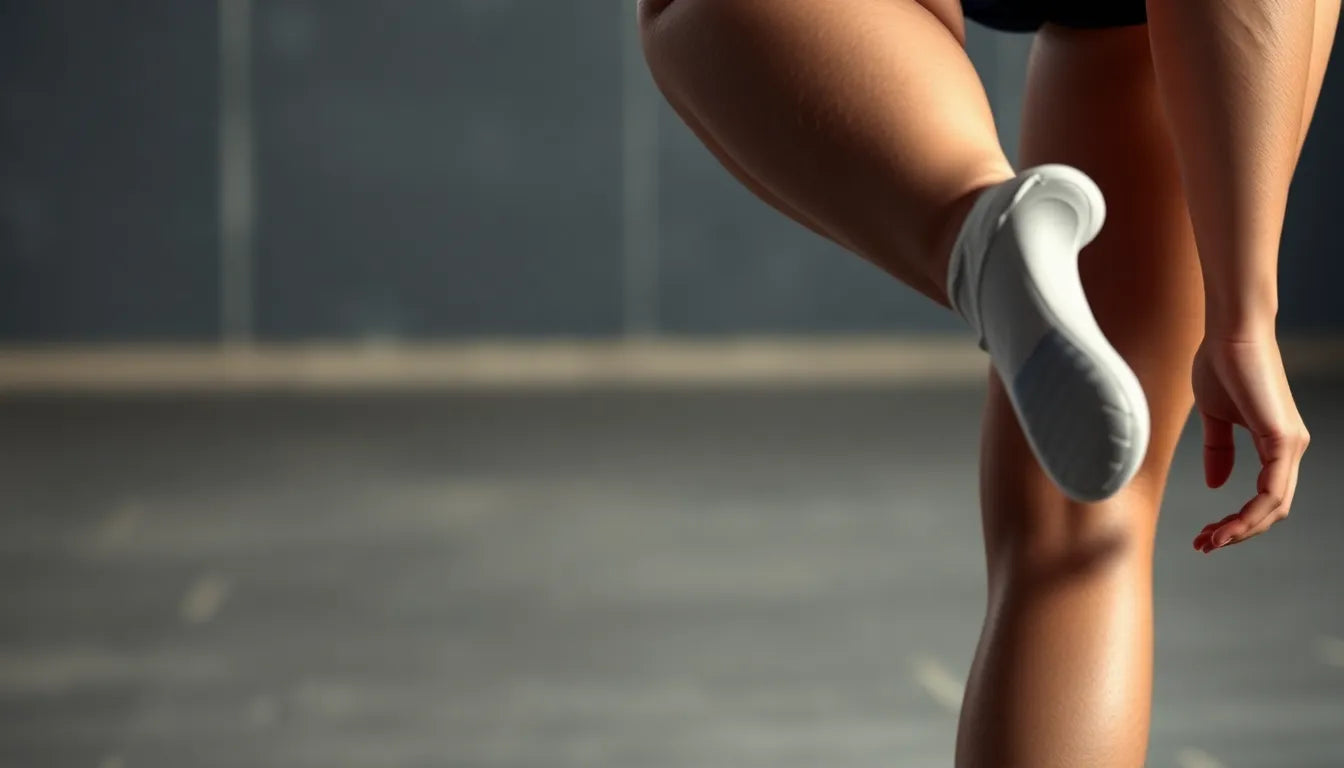Tailbone pain, medically known as coccydynia, is a common yet often overlooked condition that can significantly impact daily life. This discomfort typically arises from prolonged sitting, injury, or even childbirth, and can make simple activities like sitting at a desk or driving a car feel unbearable. The tailbone, or coccyx, is a small bone at the base of the spine that plays a crucial role in supporting your body when seated. When this area is irritated or injured, it can lead to persistent pain that disrupts your routine and diminishes your quality of life.
The impact of tailbone pain extends beyond physical discomfort. It can affect your ability to concentrate at work, enjoy leisure activities, and even get a good night's sleep. For many, the pain can lead to a cycle of inactivity and frustration, as the discomfort discourages movement and exercise, which are essential for overall health and well-being. Therefore, finding effective solutions to alleviate tailbone pain is crucial for maintaining a healthy and active lifestyle.
Strategies for sitting comfortably with tailbone pain
This post aims to provide you with expert-backed strategies to help you sit comfortably, even when dealing with tailbone pain. By focusing on proper posture, utilizing specialized cushions, and incorporating movement into your routine, you can significantly reduce discomfort and improve your daily experience. These methods are not only practical but also empower you to take control of your pain management.
Proper posture is a fundamental aspect of managing tailbone pain. Sitting upright with a straight back, relaxed shoulders, and feet flat on the floor helps distribute weight evenly and prevents excess pressure on the coccyx. Specialized cushions, such as wedge-shaped cushions or coccyx cushions with a cut-out design, can also provide significant relief by offloading pressure from the tailbone. These cushions are designed to redirect weight away from the coccyx, allowing you to sit more comfortably for extended periods.

Lumbar support belt
Giver stabiliserende støtte og lindring til lænden – ideel ved smerter og spændinger.
In addition to posture and cushioning, incorporating regular movement into your routine is essential. Taking breaks to stand and move every 20-30 minutes can help reduce sustained pressure on the tailbone and promote better circulation. These breaks are particularly important for office workers or anyone who spends long hours seated. By integrating these strategies into your daily life, you can find relief from tailbone pain and enhance your overall well-being.
Proper posture for tailbone pain relief
Maintaining the right posture is crucial when dealing with tailbone pain. An ideal sitting posture involves sitting upright with your back straight, shoulders relaxed, and feet flat on the floor. This position ensures that your body weight is evenly distributed, reducing the pressure on your tailbone. To help maintain this posture, consider using lumbar support, such as a rolled towel or a lumbar roll, which can provide additional support to your lower back and help keep your spine aligned.

Men's Posture Shirt™ - Black
Forbedrer kropsholdningen med patenteret NeuroBand™-teknologi – ideel til arbejdet eller fritiden.
It's important to be mindful of your posture throughout the day, especially if you spend long hours sitting at a desk. Regularly checking your posture and making small adjustments can prevent slumping or leaning to one side, which can exacerbate tailbone pain. Additionally, leaning forward slightly while sitting can help shift the load from your tailbone to your sitting bones, providing further relief.
Choosing the right cushion for tailbone pain
Specialized cushions can be a game changer for those suffering from tailbone pain. Wedge-shaped cushions are particularly effective because they are designed to offload pressure from the tailbone. These cushions typically have a sloped design that encourages a forward tilt of the pelvis, which can help reduce strain on the coccyx.
Another popular option is the coccyx cushion with a cut-out at the back. This design specifically targets tailbone pain by redistributing weight away from the coccyx. When choosing a cushion, it's essential to select one that is firm enough to prevent sinking, as overly soft cushions can fail to provide adequate support. It's also advisable to avoid doughnut cushions, as they can increase pressure around the tailbone rather than relieving it.
Incorporating movement and breaks
In addition to proper posture and cushion use, incorporating regular movement into your routine is vital for managing tailbone pain. Taking breaks to stand and move every 20-30 minutes can significantly reduce sustained pressure on the tailbone and promote better circulation. These breaks are particularly important for individuals who spend long hours seated, such as office workers or drivers.
Simple activities like standing up, stretching, or walking around for a few minutes can make a significant difference in managing pain. Consider setting a timer to remind yourself to take these breaks, or incorporate them into your daily schedule to ensure they become a regular habit. Additionally, engaging in gentle exercises or stretches that target the lower back and hips can further alleviate tension and discomfort.
Additional strategies for comfort
Aside from posture, cushion use, and movement, there are additional strategies you can adopt to enhance comfort while sitting with tailbone pain. Leaning forward slightly when sitting can help shift the load from the tailbone to the sitting bones, reducing pain. It's also important to avoid slumping or sitting in crooked positions, as these can increase strain on the tailbone.
When selecting a chair, opt for one that provides adequate support and is neither too low nor overly soft. Keeping your feet flat on the floor and uncrossed can also contribute to better posture and weight distribution. If you find that your tailbone pain persists or worsens, consider consulting a healthcare professional for further evaluation and guidance on managing your symptoms.
Alternative seating options for tailbone pain relief
For those experiencing chronic tailbone pain, exploring alternative seating options can offer substantial relief. Yoga balls and kneeling chairs are two popular alternatives that encourage active sitting, promoting better posture and reducing pressure on the tailbone. Yoga balls, for instance, require constant micro-adjustments to maintain balance, which can strengthen core muscles and improve posture over time. However, they may not be suitable for extended periods due to the lack of back support.
Kneeling chairs, on the other hand, position the user in a way that shifts weight forward, reducing stress on the coccyx and promoting an upright posture. While these chairs can be beneficial, they might not be comfortable for everyone, particularly those with knee issues. It's important to try different options and consult with a healthcare professional to determine the best seating arrangement for your specific needs.
Adjunctive pain relief methods
In addition to seating adjustments, adjunctive methods such as cold and heat application can provide temporary relief from tailbone pain. Applying a cold pack to the area can help reduce inflammation and numb the pain, especially after prolonged sitting or activity. Alternatively, heat therapy can relax tense muscles and improve circulation, which may alleviate discomfort.
It's crucial to monitor your symptoms and seek professional advice if the pain persists or worsens. A healthcare provider can offer personalized recommendations and explore other treatment options, such as physical therapy or medication, to manage your tailbone pain effectively.
Conclusion
Managing tailbone pain requires a multifaceted approach, incorporating proper posture, specialized cushions, regular movement, and alternative seating options. By experimenting with these strategies, you can find the combination that provides the most relief and comfort. Remember, it's essential to listen to your body and adjust your routine as needed to maintain an active and pain-free lifestyle. If your symptoms persist, don't hesitate to seek professional guidance to address the underlying causes of your discomfort.
Frequently Asked Questions
What is the best type of cushion for tailbone pain?
Wedge-shaped cushions and coccyx cushions with a cut-out are highly recommended for tailbone pain relief. These designs help redistribute weight away from the coccyx, reducing pressure and discomfort. Doughnut cushions are generally discouraged as they can increase pressure around the tailbone.
How often should I take breaks from sitting?
It is advisable to take breaks every 20-30 minutes to stand and move around. Regular movement helps reduce sustained pressure on the tailbone and promotes better circulation, which can alleviate pain.
Can changing my chair help with tailbone pain?
Yes, using an ergonomic chair with proper lumbar support can significantly improve comfort and posture, reducing tailbone pain. Look for chairs that offer adjustable height, backrest, and seat pan to ensure proper alignment and support.
Is it normal for tailbone pain to persist for a long time?
While tailbone pain can be persistent, it should gradually improve with appropriate care and adjustments. If the pain continues or worsens, it is important to seek medical evaluation to rule out underlying conditions or injuries.
Are there any exercises that can help with tailbone pain?
Yes, gentle exercises and stretches targeting the lower back, hips, and pelvic area can help alleviate tailbone pain. Activities such as pelvic tilts, hip flexor stretches, and gentle yoga poses can improve flexibility and reduce tension in the affected area.
Källor
- Garden State Pain. (n.d.). "How Your Sitting Posture Can Affect Your Tailbone."
- Samson Physical Therapy. (n.d.). "Tailbone Pain When Sitting."
- Pelvic Exercises. (n.d.). "Tailbone Pain."
- Ubie Health. (n.d.). "Remedies for Tailbone Pain When Sitting."
- Hinge Health. (n.d.). "Tailbone Pain When Sitting."
- Hospital for Special Surgery. (n.d.). "Move Better: Tailbone Pain."
- Cleveland Clinic. (n.d.). "Coccydynia (Tailbone Pain)."
- NHS. (n.d.). "Tailbone (Coccyx) Pain."
- MyHealth Alberta. (n.d.). "Tailbone Pain."


















